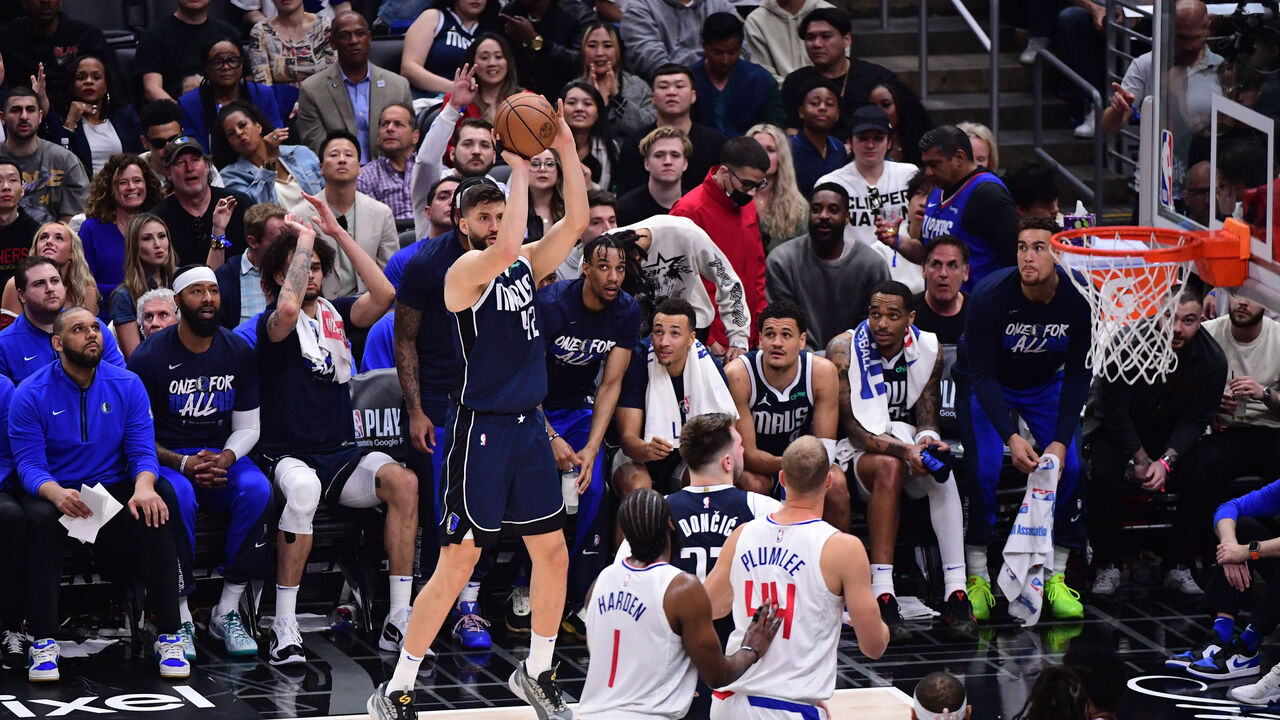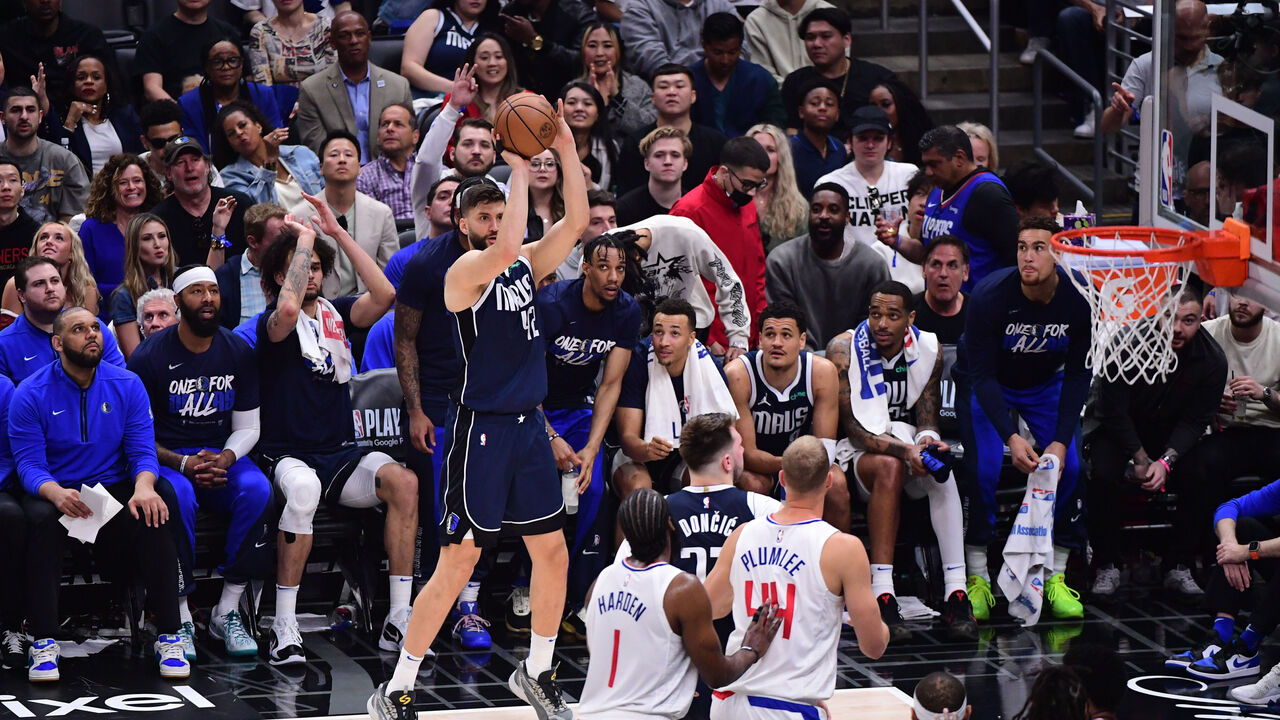Kleber at the center of the Mavs' playoff ambitions again
Last summer, the Dallas Mavericks drafted Dereck Lively II 12th overall after tanking out of the play-in to keep their pick. They then dealt an unprotected 2028 first-round pick swap to acquire Daniel Gafford at this season’s trade deadline. The organizational mandate seemed clear: Dallas wanted to be able to put a rim-running, rim-protecting, traditional center next to Luka Doncic at all times.
That approach made sense; Doncic thrives offensively with a lob threat, and the Mavs need quality interior defense to make up for the fact that they aren’t exactly airtight on the perimeter. Signing JaVale McGee flopped, and Dallas could no longer rely on Dwight Powell, so in came Lively and Gafford. Lively had a terrific rookie season, and Gafford proved to be a snug fit. And yet, Mavs head coach Jason Kidd kept reaching for his old security blanket, especially at the end of games: rolling with Maxi Kleber at the five.
Kidd moved Gafford into the starting lineup and gave him more run down the stretch, but he never seemed to trust the former Wizard at either end of the floor in high leverage. After the deadline, Kidd excised Powell from the rotation and put new import P.J. Washington at the four beside Kleber basically any time he went to his smaller look. It was hard to blame him for going that route; Washington and Kleber are a lot more effective offensively at the four and five than they are at the three and four. Those lineup configurations dominated at both ends, outscoring opponents by 22 points per 100 possessions in 211 regular-season minutes.
At 6-foot-10 with a neutral wingspan and no vertical pop, Kleber doesn’t bring nearly the same roll gravity, interior finishing, offensive rebounding, or rim-protecting ability that Lively or Gafford do. But he’s a smart and versatile defender who’s a career 36% 3-point shooter; playing him at center gives Doncic and Kyrie Irving more space to attack on offense and makes Dallas more switchable defensively. Kleber can also create more separation for the Mavs’ guards as probably their best screener or wipe out his won guy with a Gortat.
Dallas rode Kleber-at-five lineups all the way to the Western Conference finals the last time the team was in the playoffs, so perhaps it’s no surprise Kidd went back to them at the first sign of trouble two years later. The Los Angeles Clippers punched Dallas in the mouth in Game 1 in part by helping aggressively off all its shaky-shooting wings (Washington, Derrick Jones Jr., Josh Green, Dante Exum), which made things particularly congested when the Mavs also had a non-shooting center on the floor.
It’s not like they got a ton defensively from Gafford or Lively in that game anyway, as Ivica Zubac came out and bludgeoned them. So, for a big chunk of the second half and all of crunch time in Game 2, Kidd kept both on the bench. Kleber made several key defensive plays and hit a huge three down the stretch to help secure the split in L.A.

Gafford and especially Lively have been a lot better since those first two games, and they’re the biggest reason the Clippers currently have the lowest at-rim field-goal percentage of any team in the playoffs. They’ve shot just 39.1% at the basket with Lively contesting, which is the second-lowest mark (after Chet Holmgren’s) among qualified playoff players who’ve challenged at least four such shots per contest.
The Mavs still struggled tremendously on offense through the first four games of the series when one of their traditional bigs was in the game, especially when Kleber was also on the floor. Conversely, with Kleber at center, Dallas had a 140.9 offensive rating, which was about 35 points per 100 possessions better than the team had scored with anyone else playing the five. That’s why Kidd opted to once again close with that alignment in Game 4 after the Mavs had erased a 31-point deficit to give themselves a chance to win.
Unfortunately, unlike in Game 2, that lineup got shredded defensively in crunch time. And while Kleber wasn’t the biggest culprit in James Harden’s game-sealing floater parade (the Mavs’ perimeter defenders didn’t put up much resistance), he wasn’t blameless in leaving the upper paint undefended.
That was enough for Kidd to adjust. After rolling out Kleber at center for 47 minutes in the first four games of the series, he didn’t play a second of those lineups in Game 5, and his team wound up running away with a 123-93 win. After struggling so badly to score with Kleber at power forward, those lineups put up a 141 offensive rating and outscored the Clippers by 17 points in 19 minutes.
That worked in large part because Kleber hit five of his seven 3-point attempts, including four straight during a crucial second-quarter stretch, as L.A. left him all alone in the corner. It also worked because Kleber, while not quite as nimble as he was two years ago, can still handle a wide variety of defensive assignments. The fact that the Mavs can put him on Paul George, and that Kleber can go from chasing George through a maze of off-ball screens to veering back and breaking up a lob, makes him pretty valuable:
The Mavs have asked a lot of Maxi Kleber defensively in this series, been fun watching him take on the challenge.
His footspeed at his size is super impressive. pic.twitter.com/3obpMa1A1I
— Jackson Frank (@jackfrank_jjf) May 2, 2024
When the Clippers put Russell Westbrook on the floor, Dallas shifted Kleber onto Westbrook, trusting him to man the back line when their center came out to the level. Westbrook shot 2-for-11 from the field, with Kleber either laying back and absorbing his drives or helping middle and daring him to shoot from outside.
He’ll have to keep knocking down those threes in order to keep the defense honest and make lineups with him at power forward offensively viable. If he can (and he historically has in the playoffs), then the Mavs get the best of both worlds. Having Kleber out there with a true rim-protector – especially Lively – makes them extremely difficult to score on. For the series, they have a 101.2 defensive rating with those two on the floor despite the fact that the Clippers have hit 54% of their threes in those minutes.
There’ll be times when he won’t hit enough shots and it won’t work, but in those cases, Kidd can still downsize if or when Dallas needs an offensive lift. One way or another, whether he’s their literal center or not, Kleber will remain central to the Mavs’ hopes of a deep playoff run.


